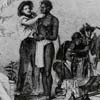Featured Articles

British Seaside Fiction
The article offers a comprehensive overview of the sociological underpinnings at the basis of the increasing appeal of coastal resorts in the British Isles in the 18th and 19th centuries, and the various fictional expressions of this appeal, from “the lure of promiscuous mixing” and “slumming”, to crime fiction and romance. It also provides an extensive bibliography of this very specific genre which incorporates (and challenges) various aspects of class consciousness in Britain.
![Courtly Love [Amour courtois]](https://www.litencyc.com/images/free-articles/2-CourtlyLove.jpg)
Courtly Love [Amour courtois]
The essay encompasses various aspects of this hugely influential medieval phenomenon, which emerged in France in the early 12th century and then became pervasive throughout Europe. Written by a scholar with extensive expertise in medieval European literature, it discusses its origins and surveys various representative sub-genres, from troubadour poetry (including songs, the estampida, the sextina, the tenso, the partimen etc.) to the German minnesang and the courtly romance in its French, Germanic, Italian and English forms.

Dystopia and Dystopian Literature
Offering a panoramic survey of crucial dystopian works in world literature, the essay addresses key developments in the history of this important literary and cinematic genre. In six sections dedicated to “dystopia and utopia”, “totalitarianism and authoritarianism”, “science and technology”, “consumerism and the culture industry”, “sex and gender” and “race and colonialism”, the article discusses a range of well-known dystopian texts and films, emphasising common preoccupations as well as their frequent intersection with contiguous genres such as speculative or science fiction.

Review of Alexander von Humboldt: Perceiving the World, West Lafayette, Indiana: Purdue University Press, 2023
The first review article published by The Literary Encyclopedia, it offers a brilliant insight into a fascinating new collection on the work of Alexander von Humboldt, the ur-scientist, written by one of the leading experts in his life and work. Together with the biographical entry on Humboldt, and the recommended readings associated to it, the LE thus offers a solid introduction into the work of this quintessential Enlightenment figure and the manifold aspects of his rich and diverse intellectual heritage.

Slavery, Slave Trade, The Triangular Trade
The article offers a general context and analysis of one of the most consequential forms of human exploitation and economic enslavement, from its origins in Antiquity to its colonialist heyday rooted in the transatlantic slave trade. It looks at the importance of slavery in the British and American economies, and provides a brief overview of anti-slavery and abolitionist movements and writings, before looking more closely at a range of literary responses, from 19th century ‘slave narratives’ to postcolonial revisitations in the 20th and 21st centuries (including drama productions and other wider cultural responses).


